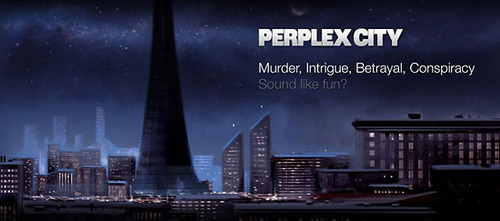a collection of brief illustrated articles and videos to keep you up to date with issues around stories at work and particularly their role in culture change
Don't wanna be here? Send us removal request.
Text
the stories behind the numbers
We’ve just been watching David McCandless’ TED Talk on the beauty of data visualization. It contains some nice examples of how the way in which you present data can reveal (or hide) what’s going on. And presenting data is such a stimulating mix of art and science.
It reminds us of the wonderful books by Edward Tufte. One of our favourite graphics is in The Visual Display of Quantitative Information.

source | wikimedia commons (click on image to open original)
It is by Charles Joseph Minard, a French engineer, and shows the terrible fate of Napoleon’s army in Russia. Beginning on the left on the Polish-Russian border, the thick band shows the size of the army as it invaded Russia. The width of the band indicates the size of the army at each place on the map. The path of the retreat from Moscow is depicted by the darker, lower band, which is linked to a temperature scale anddates at the bottom of the chart.
2 notes
·
View notes
Text
transmedia storytelling

The rise of each new medium -- print, motion pictures, radio, television -- introduces new forms of communication and entertainment. Often, the new medium initially replicates what came before: Many early movies were filmed stage plays, and early television programs were based on their radio antecedents. Eventually, however, each new medium evolves into its own form.
Our current multi-channel, multi-screen, “always on” world is giving rise to a new form of storytelling, dubbed “transmedia,” that unfolds a narrative across multiple media channels. A single story may present some elements through a television series or a motion picture with additional narrative threads explored in comic books, video games or a collection of websites and Twitter feeds. Depending on their level of interest, fans can engage in selection of these story elements or follow all of them to fully immerse themselves in the world of the story.
That is the lead-in to a fascinating interview with Andrea Phillips published in Knowledge@Wharton under the title of Transmedia Storytelling, Fan Culture and the Future of Marketing. If you'd like another take on the topice, take a look at our previous posting on seven myths about transmedia storytelling.
2 notes
·
View notes
Text
Humans of New York
It all began when Brandon Stanton lost his job in Chicago and moved to New York in the summer of 2010:
I thought it would be really cool to create an exhaustive catalogue of New York City’s inhabitants, so I set out to photograph 10,000 New Yorkers and plot their photos on a map. I worked for several months with this goal in mind, but somewhere along the way, HONY began to take on a much different character. I started collecting quotes and short stories from the people I met, and began including these snippets alongside the photographs. Taken together, these portraits and captions became the subject of a vibrant blog. With over eight million followers on social media, HONY now provides a worldwide audience with daily glimpses into the lives of strangers in New York City.
vimeo
We like the way in which Brandon has tackled a huge subject in such a personal way. And what also appeals to us is his focus on photographing the things that other people walk past every day but don't notice. It's a theme that runs through much of our own work in organizations.
Humans of New York has also become a bestselling book. At the 2013 Webby Awards, it won the Webby for ‘Best Use of Photography’ and the People’s Voice Award for ‘Best Cultural Blog.’ It has also inspired hundreds of blogs.
1 note
·
View note
Video
Two people (thanks Lily and Steph) have drawn our attention to this delicious conversation between Stuart Brand and Neil Gaiman that’s up on the brilliant Brainpickings website. Gaiman suggests stories are a life-form, organic.
Really, it’s the stories that are the life-form — they are older than us, they are smarter than us, they keep going. But they need human beings to reproduce, much as we need food… we need things to keep ourselves alive.
We’ve been great fans of Stuart Brand pretty much since Sparknow started and his Long Now informs a lot of the unspoken values behind our approach. We also drew on Neil Gaiman in our first report on the role of cultural institutions in the knowledge economy.
The imagination is a muscle. If it is not exercised, it atrophies
And for us here now, not just in our work but as Sparknow working through the next decade to follow on from nearly two decades of #storiesinaction
Stories grow, sometimes they shrink. And they reproduce — they inspire other stories. And, of course, if they do not change, stories die.
Enjoy.
0 notes
Text
stories as conversation prompts

detail from one of the posters we created for the project
A recent project we’re particularly proud of was for a global manufacturing company. The challenge was to find a way to open up conversations about difficult issues that those involved were reluctant to discuss.
We presented a case study at stories in action last year. We gave it another outing at Comma Partners’ latest event, attended by 30 senior internal communicators.
Alison Boothby has taken it as the basis for a great article for Simply Communicate on using stories to spark meaningful change. As well as summarizing key aspects of the project and our approach, she has captured the reactions and thoughts of many of those who were there.
0 notes
Text
one way to tackle ethical issues
We’ve written a number of articles on ethics and ethical dilemmas including ethics issues in banking, drivers and bankers and drugs and ethics.

photo | StockMonkeys.com
So we were intrigued to come across I Paid A Bribe.
ipaidabribe.com is Janaagraha’s unique initiative to tackle corruption by harnessing the collective energy of citizens. You can report on the nature, number, pattern, types, location, frequency and values of actual corrupt acts on this website. Your reports will, perhaps for the first time, provide a snapshot of bribes occurring across your city. We will use them to argue for improving governance systems and procedures, tightening law enforcement and regulation and thereby reduce the scope for corruption in obtaining services from the government. We invite you to register any recent or old bribes you have paid. Please tell us if you resisted a demand for a bribe, or did not have to pay a bribe, because of a new procedure or an honest official who helped you. We do not ask for your name or phone details, so feel free to report on the formats provided.
Janaagraha is a not-for-profit organization that aims to strengthen democracy in India by working for citizen participation in urban local government. And what a great initiative!
0 notes
Text
the future of museum learning
Here's a short case study that illustrates Sparknow's approach to workshops – situating them in the wider context, making them stimulating and enjoyable, and ensuring that they produce materials for onward travel.
This workshop was part of an initiative to help the museum learning sector define what they do, the value they add and what activity they need to prioritise in the future.
We used it to bring together individuals with a range of expertise in order to tease out the right questions to ask, pull together the answers we already had and map out the routes to the rest of the answers. The workshop also provided a space to gather and test ideas, and an evidence base for the think-piece.
youtube
1 note
·
View note
Text
getting to the truth

photo | andrefromont/fernandomort
Here’s a great piece of advice from Marcus Gardley, poet and playwright:
When you’re trying to get stories out of people always meet them three times. The first time you’ll catch them on a good day; the second time they’ll be giving you what they think you want to hear; the third time they’ll tell you the truth.
Thanks to Laura Humphrey for bringing it to our attention.
0 notes
Text
brands, money and emotion
Manchester United is the world’s most valuable football brand says Brand Finance, a consultancy. Well it’s certainly not the world’s most exciting team on the pitch. Nor has it been for quite a while.

photo | WallWideHD
So what’s going on here? A number of factors are at work.
Ed Woodward, the club’s executive vice-chairman, is ‘the Ronaldo of football’s commercial sphere’. That’s according to David Haigh, Brand Finance’s chief executive quoted in an article in the FT.
Then there are the spondoolies flooding into the club’s coffers as a result of the new Premier League broadcast deal. That dosh has also helped elevate a number of other Premier League clubs above their rivals elsewhere in the brand value table.
Finally there’s brand strength, which is based on a combination of marketing spend, goodwill accumulated with fans and success on the pitch. It also includes a ‘can’t stand’ factor, which is seen as a positive because it indicates a successful club that is loathed by jealous rival fans.
That’s a reminder that brands are all about emotion. And surely there’s no sector where emotions run higher or where there are so many ‘Marmite’ brands. It really hurt to feature two such loathsome teams as Manchester United and Chelsea in our blog.
1 note
·
View note
Text
the Mission Moment
We subscribe to the GovLoop newsletter and it’s a always worth flicking through. Today’s talks about The Mission Moment, a powerful way which non-profit organisations often open their board meetings.

image | Council of Peoples Organization
A staff or board member opens the meeting with a recent story about how the organisation has made a difference. This is a pretty economical way to get several things done. It:
Reminds people of why they are there.
Strengthens commitment to a shared purpose.
Provides board members with concrete examples of difference to use in other settings.
Reduces strife by holding beneficiaries in mind.
A good Mission Moment is a story about a person, the obstacle(s) they faced, and how the staff of the organization helped them overcome the obstacle(s). This isn’t a time to share program overviews or the latest data. It’s time to tell a 3-5 minute story about a person and how the agency’s work helped him/her.
A nice twist is the silent start where the meeting opens with a few minutes silence for people to remember and reflect on why they are there.
In other settings, nuclear or oil and gas say, where the risks can be very high and needs to be the responsibility of all, all meetings open with a safety moment.
0 notes
Text
information: catalysis or paralysis?

photo | Martin James
Ahead of our working breakfast on strategy and story next week, we’ve been in conversation with Sean Lusk and Nick Birks about their book Rethinking Public Strategy
Here are a couple of burrs from that conversation on which to snag your imagination:
‘Iain McGilchrist, in his extraordinary book The Master and his Emissary argues that there are profound dangers in the dominance of what might be termed ‘left-brain thinking’ wherein the rational, observable and known always triumps over the possible, glimpsed, unknown and not-yet known. Where so called ‘fact’ trumps imagination.’
‘Data isn’t information and information isn’t knowledge. For each to become the other, a catalyst is needed...This is perhaps the most interesting paradox of our age: surrounded by information, are humans growing stupider? If so, what might be the counter to that?’
0 notes
Text
We've been in discussions with Sean Lusk and Nick Birks about their recent book on rethinking public sector strategy. Here's a taster of their thinking on strategy and story.
0 notes
Text
storytelling and transformation

We enjoyed Alex Garland’s latest film, Ex Machina, so we were interested to come across an interview with him in Fast Company. In it he reflects on his experiences as a storyteller across a range of media – as author of an illustrated novel, as script writer and as film director. He covers seven main topics, three of which are as relevant to organisational transformation programmes as they are to storytelling (and both of those topics are of interest to us!).
Economy matters – in the case of storytelling that boils down to how much you can achieve with how few words. The transformation equivalent could be much you can achieve with how few processes.
Don’t assume that things will go according to script – external conditions can and will intervene, and that’s not necessarily a bad thing. Transformation programmes (even economical ones!) are complex with many interacting parts. It’s vital to have a clear sense of where you’re going but you’d better be prepared to modify your plans in response to developments.
Collaboration trumps direction – at least for Alex Garland it does. And to a large extent it is a matter of personal style and belief. There will be situations, particularly crises, where a single individual needs to take control. But more often than not we’d say that you’re more likely to get buy-in from a collaborative approach.
The other points Alex makes are:
Follow your interests, and the story will follow.
Know when it’s not working.
Editing a film means rewriting it.
The elements of storytelling are the same across all platforms.
As Alex puts it:
‘It’s how do you convey via image and words and dialogue the themes and concerns of the narrative. How do you develop characters?’
0 notes
Text
engaging through adversity
This video from Engage for Success highlights the importance of having a strong strategic narrative when going through a period of transition. In it you'll hear:
Sir Bob Kerslake, until recently Head of the Civil Service, on being open and honest
Eric Collins, Managing Director, Nampak Plastics on the importance of consistent leadership from the top
Martin Taylor, Director, Combat Air Support and Phil Entwistle, Warton Unit, Trade Union Convenor, BAE Systems on the benefits of briefing people upfront
Stephen Hughes, Chief Executive Officer, Birmingham City Council on the magnitude and nature of the communication challenge
Sally Hopson, Customer and People Director, Pets at Home on the damaging effects of uncertainty.
0 notes
Text
digital communications’ future face
Coinciding with International Women’s Day on 8 March, Women’s Aid installed a digital hoarding of a woman’s bruised face that ‘healed’ as it attracted the attention of passers-by. It’s the first time the attention of people looking at a digital hoarding has triggered an immediate change in the on-screen image.
vimeo
The hoarding uses facial recognition technology that enables the interactive hoarding to recognise when people actively pay attention to the image it contains. Those who look at it get feedback via a live video feed that runs along the bottom of the hoarding as a visual ticker-tape, registering an increasing number of viewers.
The campaign sought to convey the message that, for things to change, it only takes one person to notice that someone is the victim of domestic violence. It also demonstrates the growing sophistication and potential of digital communications.
0 notes
Text
take care of yourself
In Barcelona over Easter, we visited an exhibition of work by French conceptual artist, Sophie Calle, at La Virreina.

What particularly struck us was her installation, Take Care of Yourself. It started with an email message, sent to Ms Calle by her then partner, ending their relationship. The message concluded with the words ‘Take care of yourself’.
Searching for the meaning behind the words, she asked 107 women for their takes on the message. They ranged from actresses and singers to psychologists and sociologists and included a judge, a proofreader, a fortune-teller and an adolescent. Most responded in writing but some offered their interpretations as performances caught on video.
The result is both illuminating and paradoxical. On the one hand, you become aware of all sorts of nuances and possible meanings that you’d never have apprehended from even the most conscientious analysis. On the other, for us at least, the sheer volume of responses begins to dissolve the pain and emotion at the heart of the message.
Take Care of Yourself is a moving demonstration of the importance of slowing down and seeking different perspectives, particularly at times of crisis and turning points. Those are things that most of us do rarely enough as individuals in our private lives, let alone with our colleagues at work.
1 note
·
View note
Text
HUMAN POSTCARDS - everyone is a story
HUMAN POSTCARDS is a series of one minute portraits taking you into the lives and minds of a universal community, the often unnoticed “invisible” people.
vimeo
HUMAN POSTCARDS #2 - BRUCE from Human Postcards.
These small voices become big stories and the postcard format is evolved into sound and moving image in a way that keeps its containment, crispness and power to establish a personal connection.
Postcards also connect to Sparknow in ways that Victoria and Andrew Curry explore in their article on postcards as doorways.
0 notes